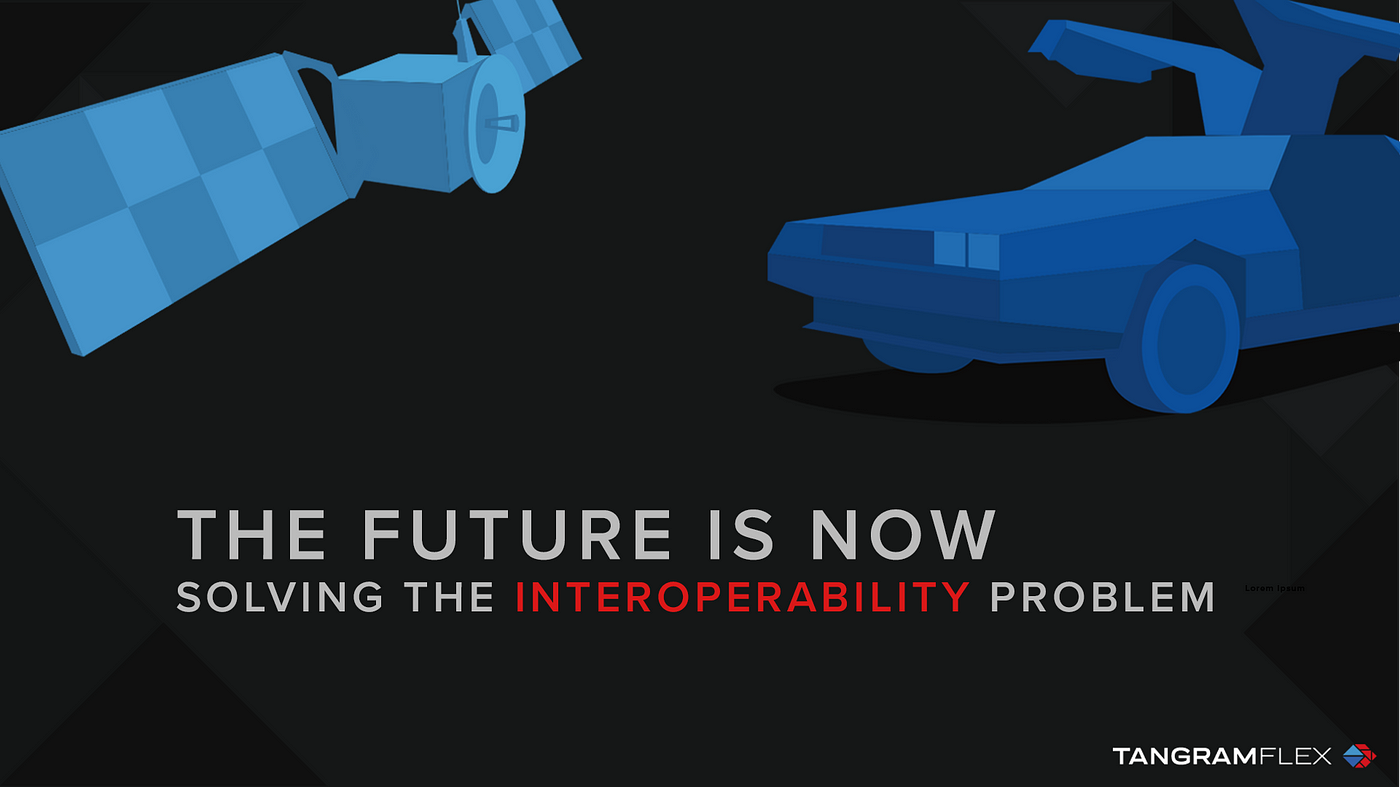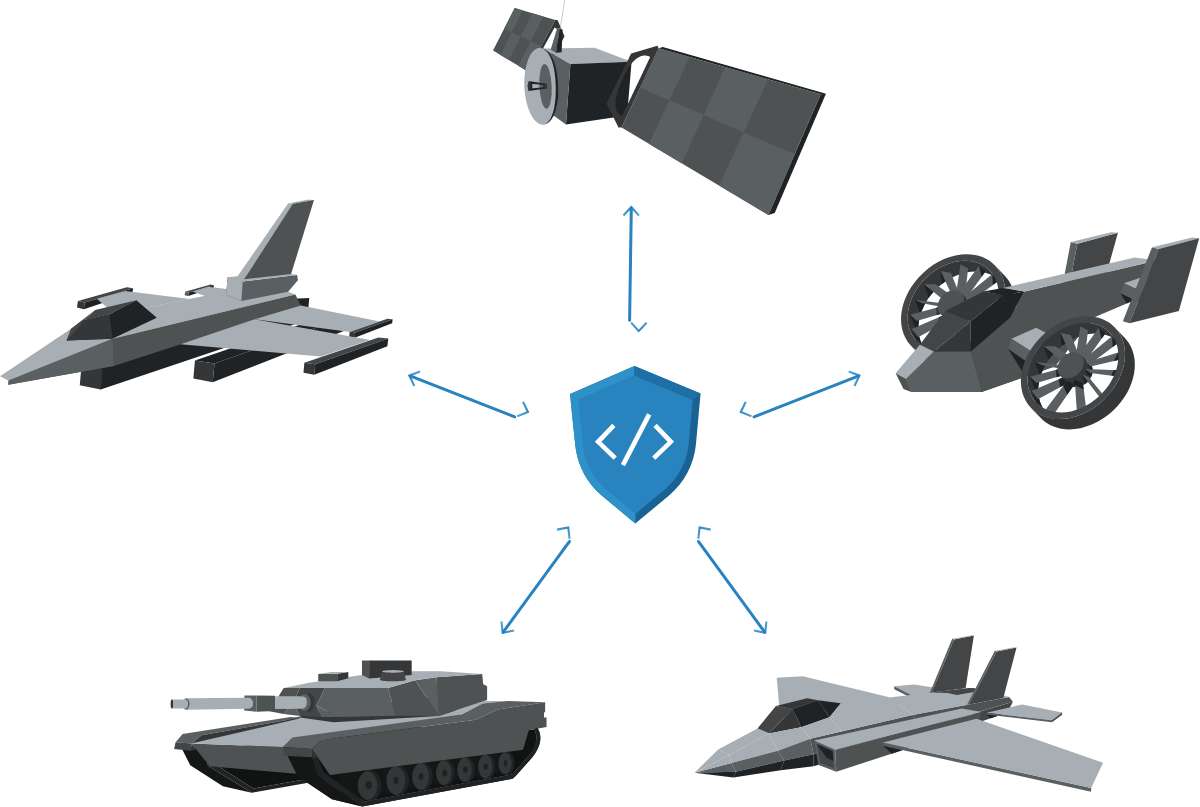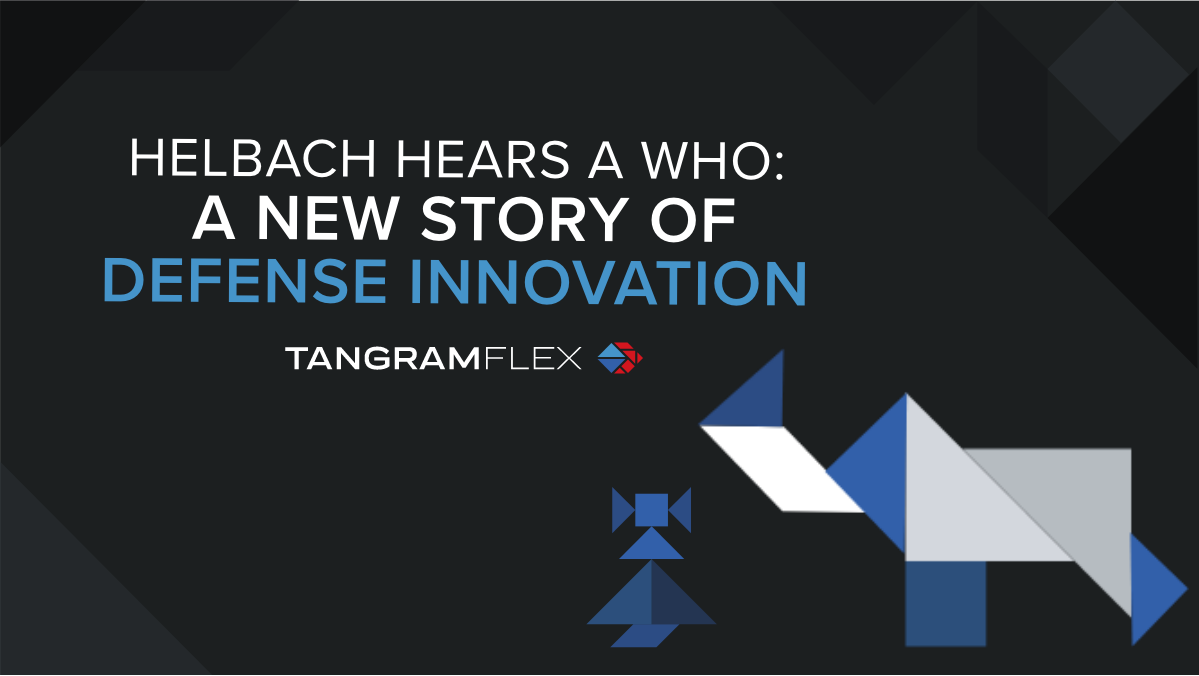Tangram Flex is in the business of changing the way defense systems are modernized and maintained,...
The Future is Now: Solving the Interoperability Challenge
Contributed by Liz Grauel, marketing leader at Tangram Flex.

The world I was promised by cartoons of the late 1980s is here. Airplanes pilot themselves. Flying cars are crossing the line between prototype and product. Robots aren’t just vacuuming, they’re communicating with one another between land and sea. Just last week I had a sprained ankle x-rayed by a rolling machine, the images sent over airwaves to a radiologist in another city at the moment they were captured. We’ve invented technology we can’t actually see that now powers the systems that we can touch– and once we do that, we want to connect it all together.
These Lucky Charms-powered visions of the future meet a hard truth off-screen: software integration is really hard. In a Jetsons’ world we would press a button to see an unmanned aircraft and robot on the ground working together without any work from our human hands. We could take the futuristic surveillance system developed in a mad scientist’s lab and pop it into a tactical drone to give Captain Planet the best possible planet-saving technology on demand. In reality, we haven’t quite figured that out.
The hyper-speed innovation once monopolized by Silicon Valley firms is no longer bounded by geography or wealth. The growing availability of freely available information paired with affordable tools has made inventors of engineering departments and maker space tinkerers alike. “New” and “state-of-the-art” are fleeting concepts when it comes to software capabilities.
Today’s Secret Word Is… Interoperability
If you’re reading this article, there’s a good chance you arrived here on purpose and just want me to cut to the chase. Well, here it is: we have all of this incredible, genius, powerful technology at our fingertips, and militaries around the world are integrating it into their mission systems every day. Of course, we are doing the same in the United States. Our historic success in out-building, out-engineering, and out-maneuvering our adversaries, however, has become harder to maintain.
“Without sustained and predictable investment to restore readiness and modernize our military to make it fit for our time, we will rapidly lose our military advantage, resulting in a Joint Force that has legacy systems irrelevant to the defense of our people.” — National Defense Strategy
The National Defense Strategy is unabashed in calling out weaknesses in the methods of the past used to modernize and maintain critical military systems. The DoD vocally emphasizes the need to strengthen partnerships among US Forces, partners, and allies. Accelerate, Change, or Lose, calls General Brown of the US Air Force in 2020. Interoperability: Embrace It or Fail, writes Major General Rodney Fogg of the US Army. But uniting the activities of our Joint Forces and sharing systems and capabilities between our military, our allies, and component manufacturers demands more than strategy on paper. These problems, compounded by complex software, emerging cyber vulnerabilities, and rapid technological change, have made it more necessary and more challenging than ever before to keep up.
It’s hard to argue against making interoperability a priority. Whether retrofitting an electronic warfare system or developing a new capability in a fielded aircraft, interoperability is critical to providing warfighters with access to the right information at the right time. It is often a literal life and death situation. Modern defense systems rely on data sharing and need to be adaptable in the face of complex and lethal threats. The next generation of military systems must be designed and implemented with interoperability as a core requirement.
Knowing Is Half The Battle
Interoperability is already emphasized as a key design factor for all of the DoD’s newly designed or acquired capabilities. We know where we need to head. Putting the plan into practice, though, is complicated. The way systems are designed and implemented across the defense industry has to change in major ways, and adopting this new requirement is slow.
Our recent white paper, Mission Possible: Joint Force Interoperability, explores one of the largest impediments to true interoperability. Standards aren’t standard. Each branch of the military uses unique architectures and standards for autonomous systems, and sometimes multiple standards are used even within the same service. This is a significant obstacle to joint force interoperability– and companies who build technology and capabilities of interest to the DoD have to figure out how to provide their offerings to multiple services. The movement towards open standards is a slow but positive step in the right direction. Focusing on overcoming the barriers to interoperability as an industry benefits the government, private companies, and people on the field.

Joint interoperability increases the complexity of requirements, designs, and implementation, and in turn the risk to mission success. A single miscommunication or design error can cascade into deep errors which escape detection until after integration, or worse, make it all the way to the field and lead to failure when the system is needed most. Unifying the goals of each force, ally, and partner is the only way to deliver new capabilities at the speed our missions demand without increasing risks to safety and performance.
While we can’t reinvent engineering overnight, with coordination our systems can be developed, tested, and maintained more effectively and made interoperable. Tangram works in this problem space and has developed what we call “the CSIP approach”. The CSIP approach to engineering integrates the entire system implementation lifecycle, enabling teams to get better capabilities to the field faster. CSIPs streamline joint force efforts and provide more control and insight into the engineering lifecycle. Rather than manually handing off design and code between teams and tools, features like the component library and shared workspaces enable a culture of sharing that’s critical to joint interoperability. Bringing components, tools, and people together bridges gaps between technical teams and promotes reuse of components across systems and programs. The result? Greater alignment among partners and reduced time to identify threats, deliver capabilities to the field, and meet the needs of today’s missions.
The Power is Ours
Each of the Planeteers has their own unique power — earth, fire, wind, water, and heart — which on their own are critical but combined are world-changing. Their joint force is Captain Planet, who is essentially a system created by diverse parties with their own special skills who have found a way to share their strengths through a magical ring and shared goal. Unlike self-driving cars, magical rings haven’t made their way from the cartoons to the physical world. But there are concrete, real solutions to critical system interoperability and we can get there together.
Want to learn more about Tangram’s work in interoperability? Learn about our CSIP, Tangram Pro™ at https://tangramflex.com/technology and sign up for a free trial. Have questions? Get in touch with us https://tangramflex.com/contact.

Tangram Flex simplifies software integration for mission-critical defense systems. Every system is unique, but the mission is clear: the people on the ground need dependable, adaptable equipment to get the job done. At Tangram Flex, we understand the challenges of security, speed, and safety. Our team combines engineering expertise with our Component Software Integration Platform (CSIP), Tangram Pro™, to arm engineers with customized toolkits for meeting mission needs.
Tangram Flex is headquartered in Dayton, Ohio. Our staff has experience from DoD, Fortune 500 companies, and innovative software startups. We are dedicated to walking alongside our customers to keep pace with changes in technology. Get in touch: hello@tangramflex.com.






